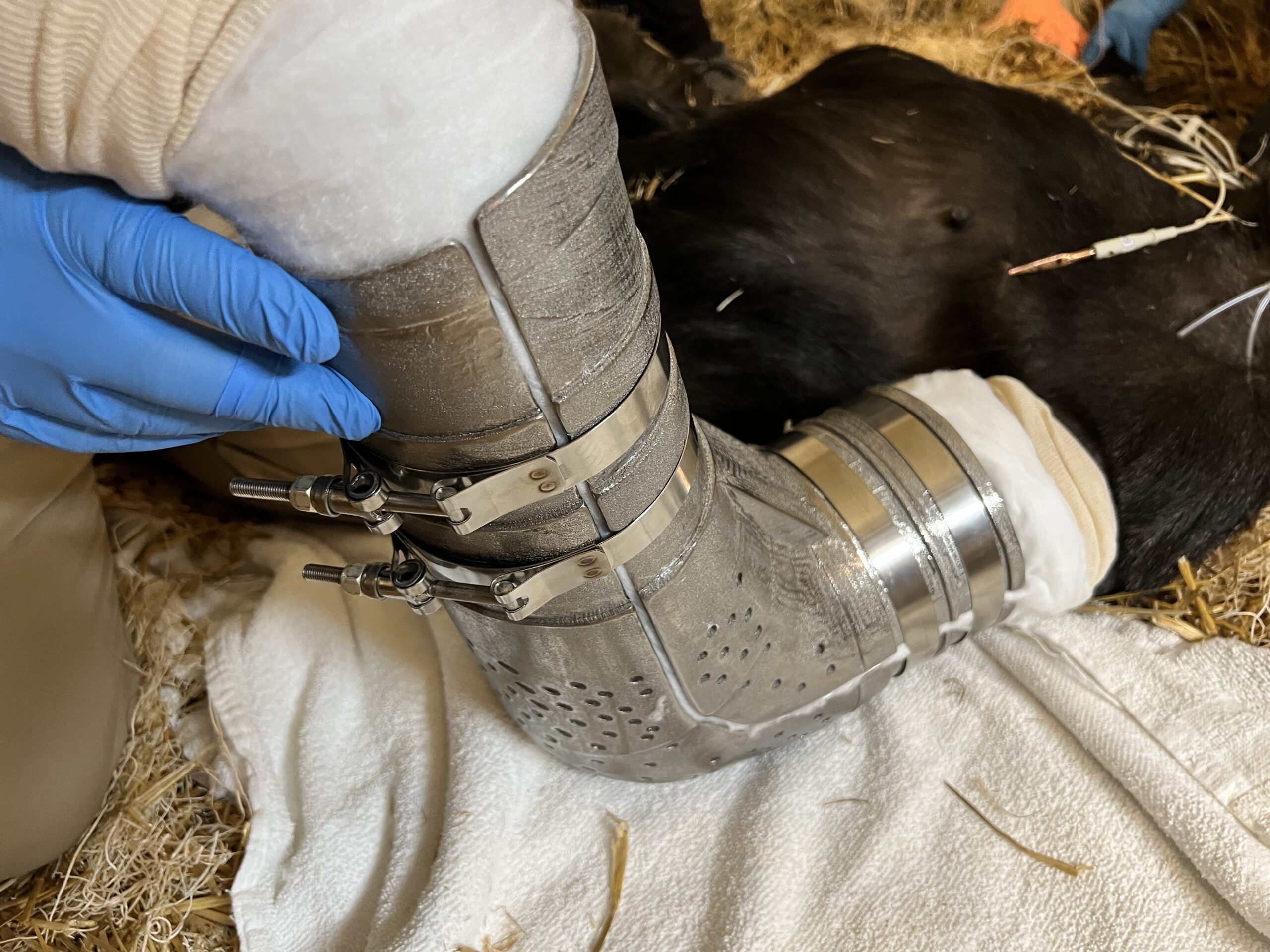Summary of Cincinnati Zoo Gorilla Gladys Gets Gorilla-Grade Cast Thanks to GE Additive:
The Cincinnati Zoo & Botanical Garden replaced the temporary cast of an 11-year-old gorilla named Gladys with the world’s first 3D-printed titanium cast following her surgery to repair a broken arm. GE Additive created this innovative cast after the original cast proved insufficient against Gladys’s strength. Veterinarians and gorilla keepers believe the titanium cast will be more durable, given that titanium is also used in the screws and plates permanently implanted in her arm. Despite its heavier weight, they anticipate Gladys will manage well due to a gorilla’s strong arms. The process from concept to delivery of the cast took less than a week, showcasing the rapid capabilities of 3D printing. Although not fond of the cast, Gladys adapts to it well and can now access more areas behind the scenes for better mobility and exploration while she heals. She will wear the cast for approximately four weeks and remain off-exhibit but close to her troop. The care team is providing close monitoring and support as she recovers. Visitors can view other gorillas at the zoo during regular hours, with early entry for members.
– The groundbreaking use of 3D-printed titanium casts in veterinary medicine, exemplified by the treatment of Gladys, the Cincinnati Zoo gorilla.
– The collaboration between Cincinnati Zoo & Botanical Garden, GE Additive, and other partners bridges advanced technology and animal healthcare.
– The role of innovation in wildlife conservation and how modern techniques are being applied to enhance animal welfare.
– The significant strength and adaptability of gorillas, particularly in responding to medical interventions and recovery processes.
– The importance of zoo-based conservation efforts and educational outreach in fostering a connection between the public and wildlife conservation.
In recent years, the intersection of technology and veterinary medicine has opened new avenues for treating wildlife with unprecedented precision and effectiveness. A compelling illustration of this innovative blend is the case of Gladys, an 11-year-old gorilla from the Cincinnati Zoo, who recently received the world’s first 3D-printed titanium cast for her broken arm. This cutting-edge approach marks a milestone in veterinary orthopedics and highlights the growing importance of such collaborations in animal conservation and care.
The genesis of this pioneering treatment lay in the necessity to address the unique challenges posed by gorilla physiology. Gorillas are known for their immense strength, which can be a double-edged sword in medical treatment, especially for something as delicate as a fractured limb. While effective for humans and smaller animals, traditional casts often fall short in withstanding the vigorous activities of a gorilla-like Gladys. Recognizing this, the Cincinnati Zoo’s veterinary team and experts from GE Additive embarked on a mission to develop a solution that was both durable and compatible with Gladys’s needs.
The collaboration between the zoo and GE Additive underscores the potential of 3D printing in crafting highly customized, durable medical devices on demand. Shannon Morman, an advanced lead engineer at GE Additive, detailed the rapid prototyping and production process, from initial design brainstorming to delivering the finished titanium cast in under a week. This fast-paced development was crucial in ensuring Gladys received the care she needed without delay.
The cast, weighing approximately 8 pounds, represented a significant improvement over its temporary predecessor in terms of durability and functionality. Despite its heft, the veterinary team was confident in Gladys’s ability to adjust to the new addition, given her considerable strength. This confidence was not misplaced, as Gladys demonstrated remarkable adaptability, managing her movements carefully and gradually acclimating to the cast. This adaptability is a testament to the resilience and intelligence of gorillas, showcasing their capability to cope with and recover from challenging situations.
Beyond the immediate benefits to Gladys, this case serves as a powerful example of the role innovative technologies can play in wildlife conservation. By leveraging 3D printing, conservationists and veterinarians can develop solutions that are effective, minimally invasive, and highly tailored to the specific needs of individual animals. This bodes well for the future of animal care and conservation, opening up new possibilities for treating injuries and ailments that were previously challenging to manage.
Furthermore, such high-profile cases are vital in educational outreach and conservation efforts. The story of Gladys and her titanium cast has the potential to captivate public interest and raise awareness about the challenges facing endangered species like gorillas. Zoos, acting as bridges between wild animals and the public, can leverage these stories to foster a deeper understanding and appreciation of wildlife, ultimately driving support for conservation initiatives to protect these magnificent creatures and their habitats.
The collaboration that led to the successful treatment of Gladys with a 3D-printed titanium cast exemplifies the incredible potential of combining advanced technology with veterinary medicine. As zoo professionals continue to explore and apply these innovative treatments, the future of wildlife conservation and animal care looks bright. By pushing the boundaries of what is possible, these efforts not only enhance the quality of life for animals like Gladys but also inspire ongoing support and interest in the critical work of conservation globally.

